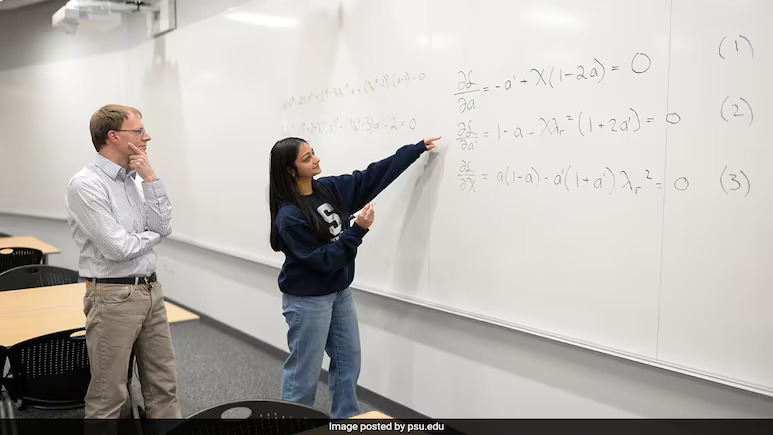Meet Divya Tyagi: The Penn State Student Who Revolutionized Wind Energy Efficiency
- Vivek Kumar
- April 12, 2025

Divya Tyagi: The Penn State Student Who Revolutionized Wind Energy Efficiency
Table Of Contents
A Story of Breakthrough and Determination
In the heart of Penn State University, a young aerospace engineering graduate, Divya Tyagi, has achieved what many thought impossible. She revisited and refined a century-old equation in wind energy science, originally developed by British aerodynamicist Hermann Glauert in 1926. This breakthrough not only simplifies the equation but also enhances its accuracy, marking a significant leap forward in renewable energy technology.
Divya’s remarkable work has the potential to revolutionize wind turbine efficiency, offering solutions that could power entire communities more sustainably. Her journey from an undergraduate thesis to global recognition is a testament to determination, innovation, and the pursuit of knowledge.

Cracking a 100-Year-Old Equation
The original equation by Glauert was instrumental in wind turbine design for decades. It focused on the maximum power coefficient—how efficiently turbines convert wind into energy. However, it lacked consideration for critical factors like total force and moment coefficients acting on rotor blades, which are essential for understanding turbine stress during operation.
Under the mentorship of Professor Sven Schmitz at Penn State, Divya expanded this equation using advanced calculus techniques. Her refined model incorporates bending moments and thrust forces, offering a more comprehensive understanding of turbine dynamics. This improvement could lead to more durable turbines capable of generating higher energy outputs.
Why This Matters: The Impact on Renewable Energy
Even a small improvement in turbine efficiency can have massive real-world implications. For instance, increasing the power coefficient by just 1% can significantly boost energy production—enough to power an entire neighborhood. Divya’s work addresses this need by optimizing rotor blade design, shape, and angle for maximum efficiency.
Her research also fills a critical gap in rotor disk theory by providing exact analytical integrals for thrust and bending moment coefficients. This advancement opens new doors for designing next-generation wind turbines that are not only more efficient but also cost-effective.

From Thesis to Global Impact
Divya’s journey began as part of her undergraduate thesis at Penn State’s Schreyer Honors College. Despite the complexity of her mathematical problem, she dedicated countless hours each week to her research. Her efforts earned her the prestigious Anthony E. Wolk Award for the best thesis in aerospace engineering.
Her story is not just about academic excellence; it’s about real-world impact. As renewable energy becomes increasingly vital in addressing climate change, innovations like Divya’s are crucial for meeting global energy demands sustainably.
A Brighter Future for Wind Energy
Divya Tyagi’s groundbreaking work is more than just an academic achievement—it’s a step toward a cleaner, greener future. Her contributions could reshape how we harness wind energy, making it more efficient and accessible worldwide.
As we look ahead, her innovations serve as an inspiration for aspiring engineers and scientists to tackle complex problems with creativity and perseverance. The renewable energy sector is set to benefit immensely from her efforts, proving that one person’s determination can truly make a difference.
